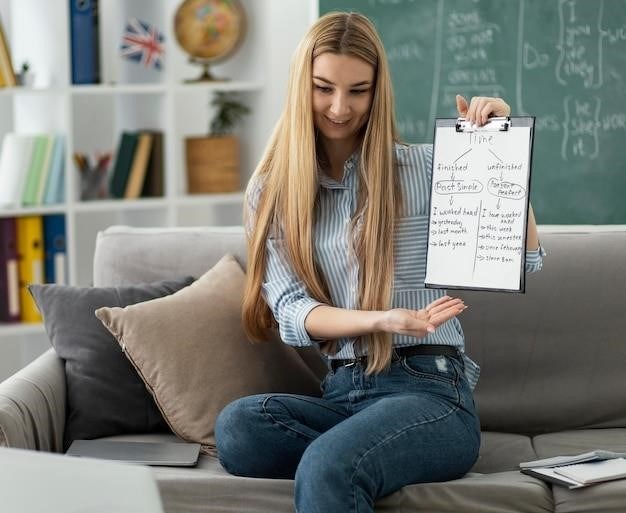Teaching Reading to English Language Learners
Teaching reading to English Language Learners (ELLs) presents unique challenges and opportunities. This guide provides educators with practical strategies and resources to support ELLs in developing their reading skills. It explores the importance of oral language development, phonics instruction, and effective strategies for building background knowledge, developing vocabulary, and providing explicit instruction. The guide also addresses assessment and differentiation, culturally responsive teaching, and technology integration. By implementing these approaches, teachers can create a supportive learning environment that empowers ELLs to become successful readers.
The Importance of Oral Language Development
A strong foundation in oral language is crucial for English Language Learners (ELLs) to become proficient readers; Oral language development encompasses listening, speaking, and understanding the nuances of spoken English. It lays the groundwork for decoding, vocabulary acquisition, and comprehension. ELLs need ample opportunities to engage in meaningful conversations, participate in interactive activities, and develop their ability to express themselves orally. By fostering oral language development, teachers create a supportive environment where ELLs can confidently build the necessary skills for reading success.
Phonics Instruction for ELLs
Phonics instruction is essential for ELLs, as it helps them understand the relationship between letters and sounds in English. However, it’s crucial to adapt phonics instruction to their unique needs. Teachers should consider their students’ first language and any potential transfer of phonetic knowledge. Explicit instruction, where sounds are taught systematically and systematically, is vital. Visual aids, such as flashcards and manipulatives, can be particularly helpful for ELLs. Teachers should also provide opportunities for repeated practice, both in isolation and within words and sentences. By building a strong foundation in phonics, ELLs can gain confidence in decoding and become more independent readers.
Challenges and Strategies for Teaching Reading to ELLs
Teaching reading to ELLs presents unique challenges, including differences in language systems, cultural background, and prior literacy experiences. One key challenge is the transfer of literacy skills from their native language to English. To address this, teachers can use cognates (words with similar origins and meanings) and build on students’ existing knowledge of letter-sound relationships. Another challenge is the development of vocabulary, which requires explicit instruction and opportunities for repeated exposure. Teachers can use visual aids, graphic organizers, and real-world connections to help ELLs acquire new vocabulary; Finally, ELLs may struggle with reading comprehension due to unfamiliar cultural references or complex sentence structures. Teachers can provide scaffolding through pre-reading activities, graphic organizers, and peer discussions to support comprehension.

Resources for Teachers
This section provides valuable resources for teachers seeking to enhance their understanding and practice of teaching reading to English Language Learners.
Handbooks and Professional Organizations
Numerous handbooks have been developed to guide educators in teaching reading to English Language Learners. Many of these resources have been created as part of the requirements for completing Master’s degrees in Literacy and Reading Education. In addition to handbooks, professional organizations dedicated to literacy provide valuable resources and support for educators. The International Literacy Association (ILA) offers a wealth of information on teaching reading to diverse learners, including a position statement on Indigenous Peoples and People of Color (IPOC) in English and Language Arts. These resources can be invaluable for teachers seeking to develop their expertise in supporting ELLs’ literacy development.
Research and Studies on Teaching Reading to ELLs
Extensive research has been conducted on the challenges and effective strategies for teaching reading to English Language Learners. Studies have highlighted the importance of early English oral language skills for literacy development among ELLs, and the need for teachers to be adequately prepared to meet the needs of these learners. The Common Core State Standards (CCSS) emphasize the significance of oral language skills, reflecting a growing understanding of their crucial role in reading development. Research also underscores the importance of explicit phonics instruction, vocabulary development, and culturally responsive teaching practices in supporting ELLs’ reading success.
Effective Strategies for Teaching Reading to ELLs
This section focuses on evidence-based strategies that empower teachers to effectively guide English Language Learners on their reading journey.
Building Background Knowledge
ELLs often lack the background knowledge necessary to comprehend English texts. Building this knowledge is crucial for successful reading comprehension. Teachers can leverage various strategies⁚
- Pre-reading Activities⁚ Engage students in discussions, graphic organizers, and visual aids related to the text’s topic.
- Field Trips and Guest Speakers⁚ Provide firsthand experiences and connect learning to real-world contexts.
- Visual Literacy⁚ Utilize images, videos, and interactive simulations to enhance understanding.
- Connecting to Prior Knowledge⁚ Help students activate prior knowledge by making connections between the text and their own experiences.
By building a strong foundation of background knowledge, teachers empower ELLs to approach reading with greater confidence and understanding.
Developing Vocabulary
Vocabulary development is essential for reading comprehension. Teachers can utilize various strategies to expand ELLs’ vocabulary⁚
- Direct Instruction⁚ Explicitly teach new words through definitions, examples, and sentence contexts.
- Word Walls⁚ Create visual displays of key vocabulary words, encouraging frequent exposure and review.
- Semantic Mapping⁚ Use graphic organizers to explore relationships between words and concepts.
- Word Games⁚ Incorporate fun and engaging activities like crossword puzzles, matching games, and vocabulary bingo.
- Contextual Clues⁚ Encourage students to use surrounding text to infer the meaning of unfamiliar words.
By providing opportunities for repeated exposure and active engagement with vocabulary, teachers help ELLs build a robust lexicon that supports their reading development.
Providing Explicit Instruction
Explicit instruction is crucial for teaching reading to ELLs. This approach involves clearly explaining and demonstrating reading strategies and skills. Teachers can provide explicit instruction through⁚
- Modeling⁚ Demonstrate reading strategies by thinking aloud while reading a text.
- Guided Practice⁚ Provide opportunities for students to practice reading strategies with teacher support.
- Independent Practice⁚ Encourage students to apply reading strategies independently, gradually increasing the level of challenge.
- Feedback⁚ Provide specific and constructive feedback on students’ reading performance, highlighting areas of strength and areas for improvement.
- Remediation⁚ Offer additional support and practice for students who struggle with specific reading skills.
Explicit instruction helps ELLs understand the underlying principles of reading and develop the skills they need to become successful readers.
Using Authentic Texts
Authentic texts, such as real-world materials like newspapers, magazines, websites, and children’s books, provide a more engaging and relevant learning experience for ELLs. Using authentic texts helps students connect reading to their lives and interests, fostering a greater sense of purpose and motivation. When selecting authentic texts, consider⁚
- Relevance⁚ Choose texts that align with students’ interests and cultural backgrounds.
- Accessibility⁚ Select texts that are appropriate for students’ reading levels and language proficiency.
- Variety⁚ Offer a range of text types, including fiction, nonfiction, poetry, and digital media, to expose students to different genres and styles.
- Scaffolding⁚ Provide support through pre-reading activities, graphic organizers, and vocabulary development to help students access the content.
Authentic texts can make reading more meaningful and enjoyable for ELLs, promoting their language development and comprehension skills.
Creating a Supportive Learning Environment
Creating a supportive learning environment is crucial for the success of ELLs. A welcoming and inclusive classroom fosters a sense of belonging and encourages risk-taking. Key elements of a supportive learning environment include⁚
- Respect for Diversity⁚ Acknowledge and celebrate the linguistic and cultural backgrounds of all students.
- Collaboration⁚ Encourage peer interaction and group activities to provide opportunities for language practice and support.
- Positive Feedback⁚ Provide constructive feedback that focuses on strengths and areas for growth, promoting confidence and motivation.
- Error Correction⁚ Approach errors as learning opportunities, focusing on positive reinforcement and providing clear explanations.
- Visual Aids⁚ Utilize visuals, such as pictures, charts, and realia, to support comprehension and make learning accessible for all students.
By creating a supportive learning environment, teachers can help ELLs feel comfortable taking risks, exploring new ideas, and developing their reading skills.
Assessment and Differentiation
Assessing ELLs’ reading skills and differentiating instruction to meet individual needs is crucial for their progress.
Assessing ELLs’ Reading Skills
Assessing ELLs’ reading skills requires a multifaceted approach that goes beyond traditional standardized tests. Teachers must consider the students’ language proficiency, cultural background, and prior learning experiences. Formative assessments, such as running records, informal reading inventories, and anecdotal notes, provide valuable insights into students’ reading strategies, strengths, and areas for improvement. These assessments help teachers tailor instruction to meet individual needs. Additionally, teachers should use a variety of assessment tools, including oral language assessments, writing samples, and portfolio assessments, to gain a comprehensive understanding of students’ reading abilities.
Differentiating Instruction to Meet Individual Needs
Differentiating instruction is crucial for supporting ELLs’ reading development. This involves tailoring teaching strategies, materials, and assessments to address the unique needs of each student. Teachers can differentiate by providing various levels of support, such as scaffolding, graphic organizers, and vocabulary pre-teaching. They can also adjust the complexity of texts and tasks, allowing students to work at their own pace. Furthermore, grouping students based on their reading levels and language proficiency enables teachers to provide targeted instruction. By creating a flexible and responsive learning environment, teachers can empower ELLs to achieve success in reading.

Additional Considerations
Beyond core strategies, teachers must consider culturally responsive teaching, technology integration, and collaboration with families to further support ELLs’ reading development.
Culturally Responsive Teaching
Culturally responsive teaching acknowledges the diverse backgrounds and experiences of ELLs, incorporating their cultural knowledge and perspectives into the learning process. This approach fosters a sense of belonging and relevance, enhancing engagement and motivation. Teachers can leverage students’ prior knowledge by using authentic texts that reflect their cultural heritage, incorporating cultural themes and perspectives into classroom activities, and valuing their home languages and linguistic diversity. By creating a culturally inclusive environment that honors and celebrates the unique identities of ELLs, teachers can empower them to connect with the learning materials and develop a strong sense of self-efficacy as readers.
Technology Integration
Technology can be a valuable tool for enhancing reading instruction for ELLs. Interactive whiteboards, online dictionaries, and digital reading platforms provide engaging and accessible learning experiences. Educational software can offer personalized instruction and support for vocabulary development, phonics skills, and reading comprehension. Digital storytelling tools allow ELLs to create their own narratives, fostering creativity and language development. Moreover, technology enables access to a vast array of resources, including online libraries, multimedia content, and language learning apps, expanding students’ exposure to diverse texts and enriching their reading experiences. By strategically integrating technology, teachers can create a dynamic and interactive learning environment that caters to the unique needs and interests of ELLs.
Collaboration with Families
Building strong partnerships with families is crucial for supporting ELLs’ literacy development. Engaging families in their children’s education can create a supportive learning environment that extends beyond the classroom. Teachers can communicate with families in their preferred language, sharing information about the curriculum, reading strategies, and home learning activities. Encouraging families to read aloud with their children, provide opportunities for language practice, and expose them to culturally relevant texts can significantly enhance their reading skills. Collaborating with families also allows teachers to gain valuable insights into students’ cultural backgrounds, interests, and learning styles, fostering a more culturally responsive and inclusive learning environment.
Teaching reading to ELLs is a complex yet rewarding endeavor that requires ongoing professional development, advocacy, and collaboration with families. By implementing effective strategies and utilizing available resources, educators can empower ELLs to become successful readers and achieve their full academic potential.
The Importance of Continued Professional Development
Teachers play a crucial role in supporting the literacy development of English Language Learners (ELLs). However, the challenges of teaching reading to ELLs necessitate ongoing professional development to stay abreast of current research and best practices. Continued professional development empowers teachers to acquire the knowledge and skills needed to effectively address the unique needs of ELLs; This includes understanding the complexities of language acquisition, developing culturally responsive teaching strategies, and incorporating technology to enhance learning experiences. By investing in professional development, educators can ensure they are equipped to provide high-quality instruction that fosters the reading growth of all ELLs.
Advocating for ELLs
Advocating for ELLs is essential to ensure they receive the support and resources necessary to succeed in reading. This involves advocating for policies that promote equitable access to high-quality literacy instruction, culturally responsive teaching practices, and appropriate assessments. Teachers can advocate by actively participating in professional development opportunities, engaging in school-wide initiatives to support ELLs, and collaborating with families to create a supportive home learning environment. Furthermore, advocating for increased funding for ELL programs, specialized teacher training, and access to appropriate materials is crucial. By advocating for ELLs, educators can contribute to creating a learning environment that values diversity and empowers all students to reach their full potential.
Level up your coding game! Download a free Clean Code PDF & learn to write code that’s easy to understand & maintain. Become a coding pro today!
Need a trailer lease agreement PDF? Get a customizable template now! Avoid headaches with our guide – understand terms, rights & responsibilities. Download today!





